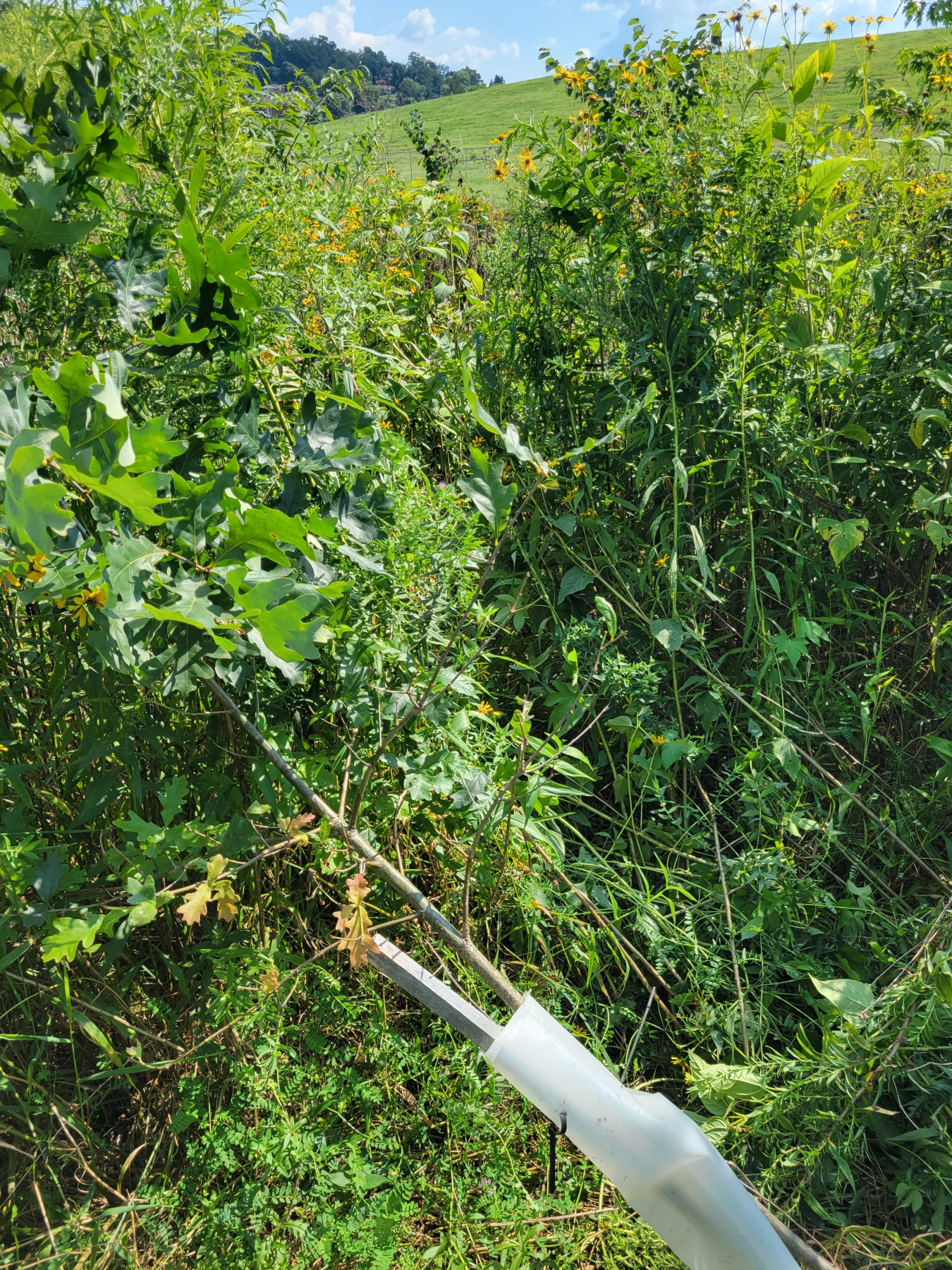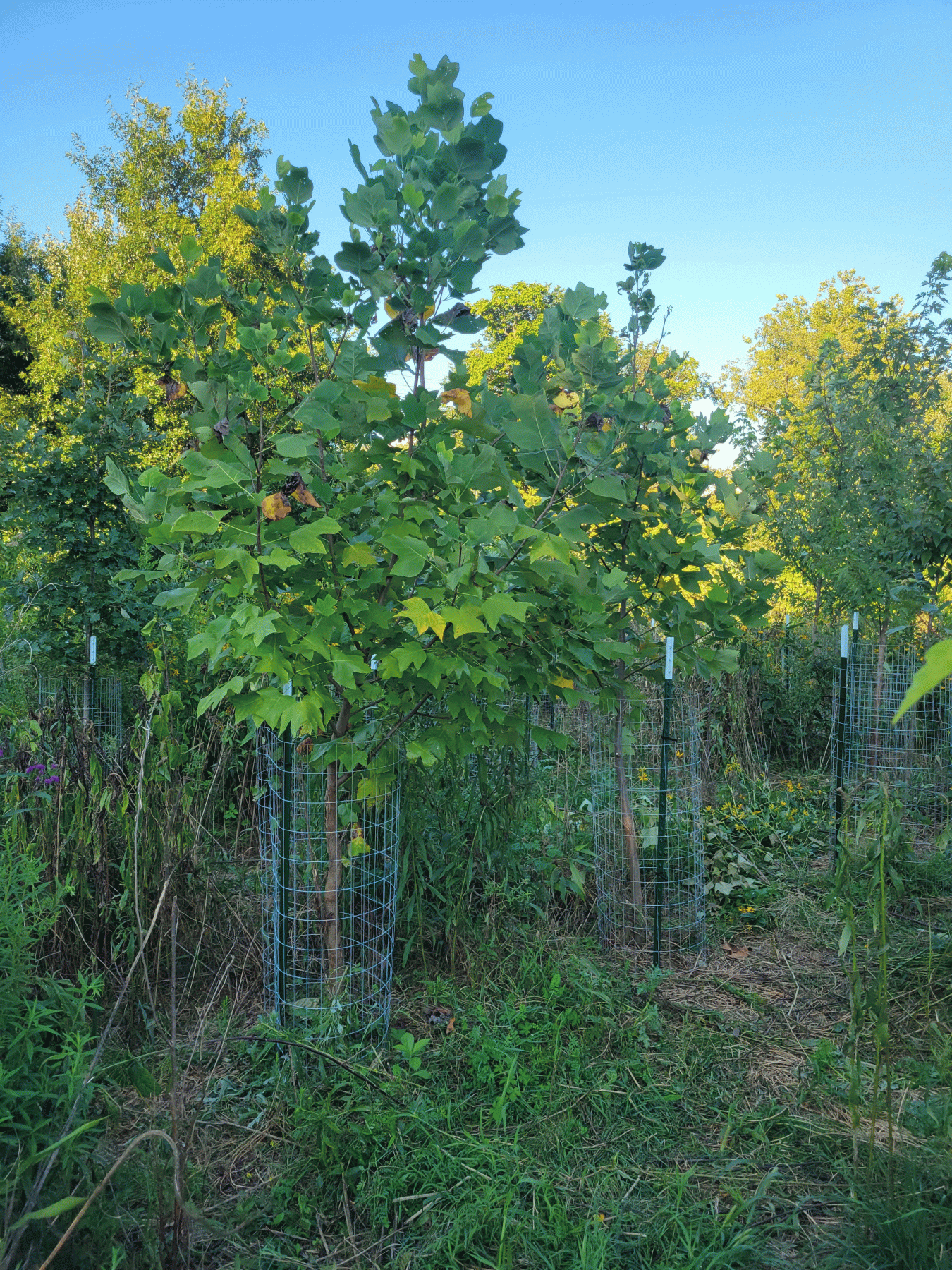Maintenance recently completed on several hundred trees in a riparian forest buffer at the Canonsburg, Pennsylvania, Disposal Site.
November 9, 2022Original project, tree planting in progress.
Original project, tree planting in progress.
Three years ago, the Department of Energy (DOE) repaired the riprap embankment along Chartiers Creek near the disposal site in Canonsburg, Pennsylvania. In addition to the engineered repairs made to the riprap, several hundred trees were planted along the top of the bank to establish a riparian forest buffer. The idea was that the tree roots would help reinforce the floodplain and help reduce erosion of the soil when the creek flooded.

Old plastic sleeves restricting tree growth.
Deer flourish in Pennsylvania and have a habit of rubbing their antlers against the base of trees, which can destroy the bark and cause the trees to die. When the trees at Canonsburg were planted, plastic sleeves were installed around their small trunks to protect the trees from deer rub.
Over the course of three years, the trees grew rapidly, with a survival rate of more than 90 percent. Because the trees are thriving, they’ve outgrown the plastic sleeves. With the threat of deer rub still present, a team from the Eco East Group, from the Fernald Preserve Site in Ohio, removed the plastic sleeves and replaced them with wire cages.

A dented cage at left shows evidence of deer rub. The cages are working as planned, giving the trees ample room for growth while protecting them from deer.
“The team out of Eco East safely installed more than 240 wire cages around trees during the week of August 22,” Site Lead Ken Broberg said. “It is estimated that the trees should be good for several years of additional growth within the cages.”
Fernald Environmental Scientist Brian Wulker said the project will be beneficial for both the bank-stabilization effort and the health of the trees.
“This project will help keep the restored riparian corridor developing as intended, and aid our survival rates going forward,” Wulker said.
Eventually, the trees will grow large and strong enough that they won’t be harmed by deer rub. The final step will be to remove the cages altogether.
Broberg said the project has been beneficial for both the LM site and the health of the forests in the state.
“This work contributes to the Pennsylvania Department of Conversation and Natural Resources goal of creating more riparian forest buffers in the state,” Broberg said.

Newly installed cages around the trees.

